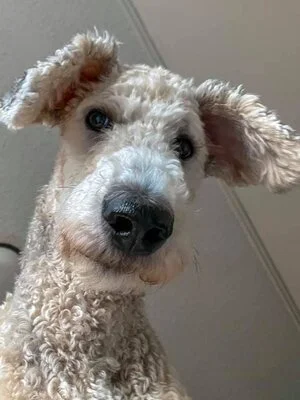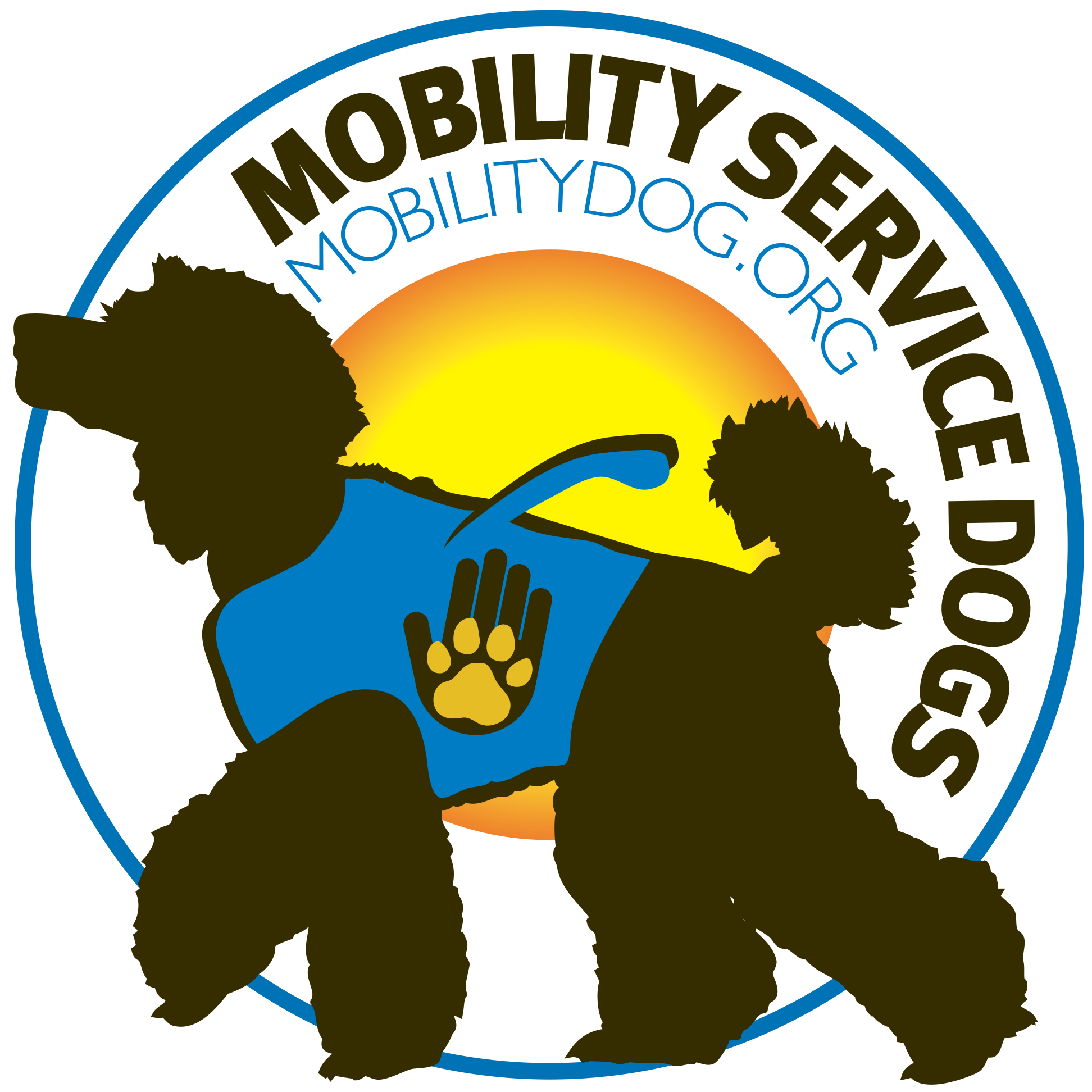How to Understand Dog Body Language: Facial Expressions
White Poodle Holding a Gray Slipper in his Mouth
Curious Poodle Looking Down at the Camera
Welcome back to our original series on how to understand a dog’s body language!
In two previous blog posts, we’ve discussed how dogs communicate through their:
Tails; and
In today’s blog, we’ll take a closer look at the common facial expressions all dogs use to communicate with their world including humans!
Human Facial Expressions
In humans, facial expressions are a critical form of non-verbal communication. Much like overall body language, when communicating with another person, without a doubt, you’re also watching what their face is “saying” as well particularly when it comes to emotions. Body language and facial expressions reveal the full story.
Science has identified 7 universal human facial expressions covering:
Surprise.
Sadness.
Anger.
Fear.
Disgust.
Contempt.
Happiness.
Interestingly, dogs use some of the same facial expressions as their humans, but not always in the same context since human emotions are much more complex.
Happy Black Poodle Looking Up at the Camera
Five Common K9 Facial Expressions
According to Time magazine, researchers have found that dogs use 16 expressive facial movements (compared to 13 in chimps and 17 in horses!).
Next, let’s take a closer look at five of the most common facial expressions used by dogs.
SMILING. This common K9 expression is one of the most confusing to humans especially if it’s a dog you don’t know! Yes, dogs do smile by pulling up the corners of their lips and displaying their front teeth. This is known as a “submissive grin” or an “appeasement grin” along with “a loose and wiggly posture” which shows no harm is intended. (If a “smile” is paired with a menacing growl or snarl, calmly remove yourself from the situation without direct eye contact.)
YAWNING. For example, when you yawn, it’s usually because you are tired. While your dog may imitate your yawn (just like humans often do), they typically yawn due to stress or anxiety to calm themselves and others (including their humans). Yes, it’s a common facial expression, but with a different context among canines. If your dog becomes stressed at the vet, try yawning at your pup to promote comfort and calmness.
LIP-LICKING. Another display of stress or anxiety involves your dog licking his lips. When this behavior is not directly connected to food, your K9 is trying to communicate his discomfort with the situation. Watch for cues when this happens to help you figure out what’s troubling your dog in those moments.
PUPPY EYES. Yes, dogs really do use this expression by raising their brows to create those wonderful “puppy eyes!” A study done at the University of Portsmouth on shelter dogs found that “dogs who raised their brows were adopted faster than dogs who didn’t.”
A SMOOTH RELAXED BROW. Except for K9 breeds that normally sport wrinkles (like the Shar-Pei and Pug), a dog’s brow that lacks any lines indicates a relaxed and calm dog!
Smiling Black Poodle Service Dog
Learn Your Dog’s Facial Expressions
Understanding your dog’s facial expressions will help you better understand your dog and how they are feeling. When your dog is happy and relaxed, learn how their face looks versus when they are stressed, nervous or even feeling aggressive. There are always telltale signs about how your dog is feeling; learn to recognize them for a better relationship with your dog!
All Images Courtesy of MobilityDog.org.
WAG = Worthwhile Awareness Guidance Workshops
MobilityDog’s Educational WAG Workshops teach how we can all make this world more user-friendly for those with disabilities.
Workshops in business, government and local community settings teach equality for all humans including those with disabilities.
Our interactive workshops advocate understanding what it means to be fully accessible for all people, what are Service Dog Teams, what life looks like from a wheelchair and how each business/organization can create full accessibility.
Click here to send an email or call 626-470-7742 for more information!





